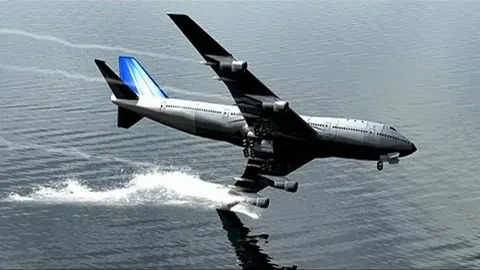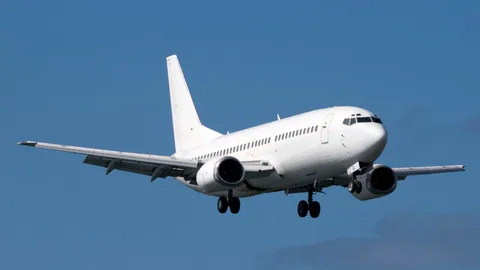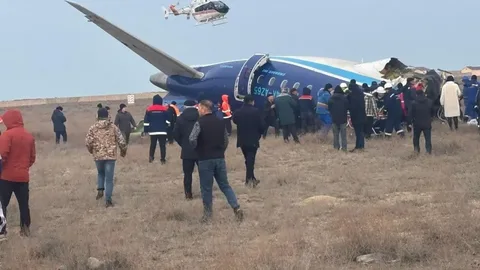Plane Landing NYT: A Closer Look at This Fascinating Event
Table of Contents
Introduction:
Plane landing is an amazing sight, and the “plane landing nyt” keyword brings to mind some of the most breathtaking moments captured by news outlets. The “plane landing nyt” stories often show how incredible it is to watch a massive plane touch down smoothly on a runway. It takes skill, precision, and teamwork to make sure everything goes right during a landing.
Every plane landing requires a lot of preparation. From the moment a plane takes off, pilots and ground control work together to make sure the landing will be safe and smooth. This teamwork ensures that passengers can reach their destination without any problems. In this blog post, we will explore the details of a plane landing and what makes it so special, using “plane landing nyt” examples to illustrate the process.

What Is a Plane Landing NYT? Exploring the Basics
A “plane landing nyt” is the moment when an aircraft descends from the sky and touches down on the runway safely. It is one of the most important parts of any flight because it requires precise timing and skill. Pilots need to control the speed, angle, and position of the plane perfectly to ensure a smooth landing. This task becomes even more challenging when weather conditions are not ideal, like during strong winds or rain.
Before the plane begins its landing, the pilot communicates with air traffic control to receive permission to land. The air traffic controllers give the pilot important details about the runway, including the weather conditions and the available space for landing. This information helps the pilot prepare for a safe “plane landing nyt.” The communication between the pilot and the tower is key to avoiding any accidents during this crucial part of the flight.
During the landing process, the pilot reduces the plane’s speed by adjusting the engines and deploying flaps to slow down. The landing gear is lowered to prepare the plane to touch the runway. A perfect “plane landing nyt” happens when the plane glides smoothly onto the ground without bouncing or tilting. The pilot then applies the brakes gently to bring the plane to a complete stop, ensuring the safety of everyone on board.
A “plane landing nyt” can be affected by many factors, such as the plane’s weight, the length of the runway, and the weather conditions. For example, landing in heavy rain or on a short runway requires extra attention and skill. The pilot must make quick decisions to keep the plane aligned with the runway and prevent any sliding or skidding.
Overall, a “plane landing nyt” is a carefully coordinated process that involves not only the pilot but also the ground crew and air traffic control. Their teamwork ensures that the plane lands safely, even in challenging conditions. Each landing is a display of precision and expertise, making it a fascinating part of every flight.
The Science Behind Plane Landing NYT Moments
A “plane landing nyt” is a precise moment that involves complex science and engineering. When a plane approaches the runway, pilots rely on a combination of physics and technology to ensure a smooth and safe landing. The science behind the process involves managing speed, lift, and drag to guide the plane from the sky to the ground gently. Every “plane landing nyt” is carefully calculated to balance these forces.
One of the key elements in a “plane landing nyt” is controlling the plane’s speed. As the aircraft approaches the runway, the pilot reduces engine power to slow it down. At the same time, the plane’s flaps are extended to increase drag, which helps lower its speed even more. This reduction in speed is crucial because landing at a high speed can make the plane bounce or overshoot the runway.
Lift also plays a critical role during a “plane landing nyt.” The wings generate lift as the plane moves through the air, but this lift must be carefully reduced as the plane descends. If the lift is too high, the plane will struggle to touch the ground. By adjusting the angle of the wings and controlling the speed, the pilot can decrease lift at the right time, allowing the plane to land smoothly.
Another important factor in a “plane landing nyt” is the angle of descent. Pilots must carefully align the plane with the runway at the correct angle to ensure a safe landing. This is where instruments like the glide slope indicator and the plane’s navigation systems come into play. These tools help the pilot maintain the right angle and direction during the final moments before touchdown.
In summary, the science behind a “plane landing nyt” is all about managing the forces of lift, drag, and speed. Pilots use advanced technology and their expertise to control these forces, ensuring that each landing is as safe and smooth as possible. The combination of physics and skill makes every plane landing a remarkable feat of engineering and teamwork.

How Pilots Prepare for a Perfect Plane Landing NYT
Pilots undergo extensive training to master the art of a perfect “plane landing nyt.” Preparing for a landing starts well before the plane reaches the airport. Pilots review the weather conditions, runway length, and any potential obstacles they might face. By understanding these factors, they can plan their approach and make any necessary adjustments to ensure a smooth landing. Every “plane landing nyt” requires careful preparation and precise execution.
As the plane approaches the airport, pilots communicate with air traffic control to receive clearance for landing. This communication is crucial because air traffic controllers provide important updates on runway availability and weather conditions. Based on this information, pilots adjust their flight path, speed, and altitude to align the plane correctly with the runway. Good communication is essential for a safe “plane landing nyt.”
Before starting the descent, pilots perform a series of checks to ensure that all systems are functioning properly. They verify that the landing gear is ready to be deployed, the brakes are working, and the flaps are in the correct position. These checks help avoid any issues during the final stages of a “plane landing nyt.” Once everything is in place, the pilots begin the descent, carefully managing the plane’s speed and angle to approach the runway smoothly.
During the actual landing, pilots rely on their training to make split-second decisions. They adjust the plane’s speed and position, keeping an eye on the runway to ensure they touch down in the right spot. Even small adjustments can make a big difference in how smooth the landing is. A successful “plane landing nyt” depends on the pilot’s ability to stay calm and focused, especially if the weather conditions are challenging.
In conclusion, pilots prepare for a “plane landing nyt” through careful planning, constant communication, and precise control of the aircraft. Their training and experience allow them to manage various challenges, from bad weather to busy airports, ensuring that every landing is as safe as possible. Each successful landing is a result of teamwork and expert decision-making.
The Role of Air Traffic Control in a Plane Landing NYT
Air traffic control plays a vital role in every “plane landing nyt” by guiding planes safely through the skies and onto the runway. These controllers manage the flow of air traffic, ensuring that planes land and take off without any collisions or delays. During a landing, air traffic controllers provide pilots with critical information, such as weather conditions, runway status, and traffic updates. Without their guidance, a “plane landing nyt” would be much more challenging and risky.
As a plane approaches the airport, the pilot establishes communication with the air traffic control tower. The controllers give instructions about the landing path, altitude, and speed that the plane should maintain. This information helps pilots align the plane with the runway, ensuring a safe and smooth descent. A well-coordinated “plane landing nyt” requires constant communication between the pilot and air traffic control, especially during busy times when multiple planes are landing and taking off.
Air traffic controllers also monitor the weather to help pilots during a “plane landing nyt.” They can warn pilots about strong winds, heavy rain, or fog that could affect the landing. If the weather is too severe, air traffic control may instruct the pilot to circle the airport or divert to another location. This quick decision-making ensures that planes land under the safest conditions possible.
In addition to managing weather and traffic, air traffic controllers clear the runway before each “plane landing nyt.” They ensure that no other planes or vehicles are on the runway when a plane is about to land. This careful coordination helps prevent accidents and ensures that every landing is smooth. Once the plane touches down, the controllers continue to guide it until it reaches the gate.
Overall, the role of air traffic control in a “plane landing nyt” is crucial for maintaining safety and efficiency. Their constant communication with pilots, attention to weather, and management of air traffic help make every landing successful. Without their expertise and support, the process of landing a plane would be much more difficult and dangerous.

Plane Landing NYT: Why Timing Is Everything
In a “plane landing nyt,” timing plays a critical role in ensuring a smooth and safe landing. Pilots need to precisely calculate when to start the descent, when to lower the landing gear, and when to touch down on the runway. Each of these actions must be done at the right moment to avoid problems like overshooting the runway or landing too hard. The importance of timing during a “plane landing nyt” cannot be overstated, as even small delays or early actions can create significant challenges.
One key aspect of timing in a “plane landing nyt” is starting the descent at the right moment. Pilots must begin lowering the plane gradually, maintaining a steady speed and angle as they approach the runway. If the descent starts too early, the plane might arrive at the runway too high, requiring adjustments that could make the landing bumpy. On the other hand, if the descent starts too late, the plane may come in too fast, making it harder to slow down in time for a smooth landing.
Lowering the landing gear is another moment where timing is everything. Pilots usually deploy the landing gear a few minutes before touchdown. If the landing gear is lowered too early, it could create extra drag, slowing the plane too soon. If the landing gear is deployed too late, the plane might not be properly prepared for the runway, leading to a rough landing. In a “plane landing nyt,” pilots must find the perfect moment to lower the gear to ensure a gentle touchdown.
Touching down on the runway also requires perfect timing. Pilots aim to land the plane in a specific area of the runway, known as the touchdown zone. This area is carefully designed to give the plane enough space to slow down after landing. If the plane touches down too early or too late, it could run out of runway or land in a less-than-ideal spot, making it harder to stop safely. A well-timed “plane landing nyt” ensures that the plane lands right in the center of the touchdown zone.
In conclusion, timing is everything in a “plane landing nyt” because it affects every stage of the landing process. From starting the descent to lowering the landing gear and touching down, each action must be timed perfectly to ensure a smooth and safe landing. Pilots rely on their training, experience, and instruments to make sure every landing is timed just right, keeping passengers safe and comfortable.
Safety Measures Taken During Plane Landing NYT
During a “plane landing nyt,” safety is the top priority for both the pilots and the ground crew. Many important safety measures are put in place to ensure a smooth and secure landing for everyone on board. These measures start long before the plane reaches the runway and involve a combination of pilot training, communication with air traffic control, and advanced technology. Each of these elements works together to make every “plane landing nyt” as safe as possible.
One of the key safety measures during a “plane landing nyt” is the use of weather monitoring systems. Pilots and air traffic controllers closely watch the weather to assess conditions such as wind speed, rain, fog, or storms. If the weather is unfavorable for landing, the pilot may delay the landing or divert to another airport. By monitoring weather conditions, pilots can make safer decisions about when and where to land, ensuring a smooth and controlled approach to the runway.
Another important safety measure is the careful inspection of the landing gear. Before a “plane landing nyt,” the pilot checks that the landing gear is fully functional and properly deployed. If there are any issues with the landing gear, pilots have emergency protocols they can follow to handle the situation safely. This might involve making a belly landing or circling the airport until the problem is resolved. Ensuring the landing gear is in perfect working condition helps prevent accidents on the runway.
Communication between the pilot and air traffic control is another vital safety measure in a “plane landing nyt.” Throughout the landing process, air traffic controllers provide the pilot with crucial information about the runway, other planes, and weather conditions. This real-time communication helps the pilot adjust the plane’s speed, altitude, and angle as needed. It also allows the pilot to coordinate with ground crews to clear the runway and ensure a safe landing environment.
Finally, after the plane touches down, additional safety measures are in place to bring the plane to a complete stop. The pilot uses both brakes and reverse thrust from the engines to slow down the plane quickly and safely. Runways are also equipped with lights and markings to guide the plane during a “plane landing nyt,” helping pilots stay on course and stop in the correct spot. These combined efforts make sure that every landing is handled with the highest level of safety and care.
In summary, the safety measures taken during a “plane landing nyt” are essential for ensuring a successful and safe landing. From weather monitoring to landing gear checks and clear communication with air traffic control, each measure plays a crucial role in keeping passengers and crew safe during this critical phase of the flight.

Famous Plane Landing NYT Stories You Should Know
Over the years, there have been several famous “plane landing nyt” stories that captured the attention of people around the world. These landings often involved incredible skill from the pilots and unforgettable moments for the passengers. Some of these stories became legendary because of the challenges faced during the landing, while others are remembered for the miraculous outcomes. Each “plane landing nyt” story highlights the importance of preparation, teamwork, and calm decision-making in critical moments.
One of the most well-known “plane landing nyt” stories is the 2009 “Miracle on the Hudson,” when US Airways Flight 1549 made an emergency landing in the Hudson River. After hitting a flock of birds shortly after takeoff, the plane lost both engines. Captain Chesley “Sully” Sullenberger made the brave decision to land the plane in the river, saving all 155 passengers and crew on board. This “plane landing nyt” became a symbol of expert piloting and quick thinking under pressure.
Another famous “plane landing nyt” occurred in 1983, when Air Canada Flight 143, also known as the “Gimli Glider,” ran out of fuel mid-flight due to a miscalculation. The pilots had to glide the plane without engine power, successfully landing it at an abandoned airfield in Gimli, Manitoba. The fact that they were able to land the plane without any casualties made this “plane landing nyt” an incredible feat of aviation.
In 1989, United Airlines Flight 232 faced a major mechanical failure when its tail engine exploded, damaging the plane’s hydraulic system. Despite the critical situation, the crew managed to guide the plane toward an emergency landing in Sioux City, Iowa. Although the landing was rough, many lives were saved thanks to the crew’s heroic efforts. This “plane landing nyt” story is often remembered for showcasing the importance of teamwork and communication during an emergency.
These famous “plane landing nyt” stories are reminders of the skill and bravery required in challenging landing situations. Pilots and crew members are trained to handle unexpected events, and these stories highlight the importance of their expertise. While some landings are routine, others become legendary moments in aviation history, teaching us about the importance of preparation, quick thinking, and calmness under pressure.
What Happens Inside the Cockpit During a Plane Landing NYT?
During a “plane landing nyt,” the cockpit becomes a flurry of activity as pilots focus on various tasks to ensure a smooth and safe landing. The pilot and co-pilot work together, closely monitoring the plane’s instruments and communicating with air traffic control. The entire process requires quick thinking and precise actions. Inside the cockpit, the focus shifts entirely to the landing, with the pilots adjusting speed, altitude, and flight path to align the plane perfectly with the runway.
As the plane begins its descent, the pilots lower the plane’s altitude while keeping a close eye on the flight instruments. They monitor the airspeed, attitude indicator, and altitude to ensure everything is in line with the planned approach. The cockpit also features advanced autopilot systems, which can be used to assist with some aspects of the descent, but the pilots must remain fully engaged in the process, making adjustments when necessary. Pilots ensure that the plane is aligned with the runway and that the speed is appropriate for landing.
Another critical moment in the cockpit is when the pilots extend the landing gear and deploy the flaps. The landing gear needs to be lowered at just the right time to prevent drag, while the flaps help slow the plane down and maintain lift. These adjustments are made based on the plane’s altitude and speed, and the pilots must carefully manage them for a smooth approach. The cockpit is filled with alerts and checks to ensure that the systems are functioning properly before the plane touches down.
In the final stages of the landing, pilots focus on maintaining a controlled descent as they prepare for touchdown. They constantly communicate with air traffic control, receiving updates on runway conditions and traffic. Inside the cockpit, the pilots make any last-minute adjustments to the approach to avoid any issues. They are fully focused, with no room for distractions, as they guide the plane towards a safe landing.
In conclusion, the cockpit during a “plane landing nyt” is a place of intense focus and coordination. Pilots follow a series of steps, adjusting the plane’s systems, checking instruments, and communicating with air traffic control to ensure that the plane lands safely. Every action, from lowering the gear to the final touchdown, requires careful timing and precision. Inside the cockpit, pilots work together to make sure the landing is as smooth and safe as possible.

Weather Challenges and Their Impact on Plane Landing NYT
Weather plays a significant role in a “plane landing nyt” as pilots must navigate through different weather challenges to ensure a safe touchdown. Poor weather conditions such as strong winds, heavy rain, fog, or snow can create difficulties for pilots during the landing process. Each of these conditions requires special adjustments and careful planning to minimize risks. Weather challenges are one of the main factors that pilots and air traffic controllers monitor closely during a “plane landing nyt.”
Strong winds are one of the biggest weather challenges pilots face when landing a plane. Crosswinds, which blow across the runway at an angle, can make it harder for pilots to maintain control of the aircraft during landing. Pilots may need to adjust their approach or perform a “crab” landing, where the plane is tilted slightly into the wind to counteract the crosswind. Wind gusts, which are sudden bursts of wind, can also affect the plane’s descent, causing turbulence and requiring pilots to react quickly to maintain a stable approach.
Heavy rain and fog are other common weather conditions that affect a “plane landing nyt.” When visibility is low due to fog, pilots rely on instruments such as radar and the plane’s navigation system to guide them safely to the runway. Rain can make the runway slippery, increasing the risk of hydroplaning, where the plane’s tires lose contact with the ground. Pilots adjust their speed and braking to ensure they can stop safely on a wet runway, and air traffic control closely monitors weather patterns to ensure that planes are spaced out and avoid any delays or accidents.
Snow and ice also present challenges during a “plane landing nyt.” Snow accumulation on the runway can reduce friction, making it harder for the plane to slow down after landing. Airports take steps to clear runways before planes land, but snowstorms can still affect visibility and cause delays. Pilots need to be prepared for changes in the plane’s behavior as it lands on slippery surfaces, and they may need to use the reverse thrust from the engines to help slow the plane down faster.
In conclusion, weather challenges significantly impact a “plane landing nyt,” making it one of the most critical factors pilots must consider. From strong winds to rain, fog, and snow, each weather condition requires careful preparation and quick decision-making. Pilots and air traffic controllers work together to manage these challenges, ensuring a safe landing despite the weather conditions.
A Step-by-Step Guide to a Successful Plane Landing NYT
A “plane landing nyt” is a complex process that involves many steps to ensure the safety of everyone on board. From the moment the plane begins its descent to the final touchdown on the runway, pilots follow a carefully planned procedure. Each phase of the landing requires precise adjustments, coordination, and communication with air traffic control to guarantee a smooth and secure arrival. Here is a step-by-step guide to understanding how a successful plane landing is achieved.
The first step in a “plane landing nyt” is the descent. As the plane approaches the airport, the pilot begins reducing altitude to align with the landing pattern. The descent is carefully monitored to ensure that the plane remains within a safe height and speed range. Pilots also adjust the plane’s flaps and landing gear to prepare for the final stages of landing. At this point, the pilots begin communicating with air traffic control to receive instructions about runway conditions and other planes in the area.
As the plane gets closer to the runway, the next step is the approach phase. During this phase, the pilots need to make sure the plane is on the correct glide path, ensuring it lines up perfectly with the runway. They adjust the throttle to control the descent rate and make slight steering corrections to stay on course. Pilots also keep a close eye on their instruments, monitoring speed, altitude, and the aircraft’s position relative to the runway. They receive real-time updates from air traffic control to help make necessary adjustments.
When the plane reaches the runway, the pilots enter the final phase of the landing process. They reduce speed by lowering the throttle, deploy the landing gear, and extend the flaps to increase lift and decrease speed. The pilots need to ensure they have the correct angle of descent to avoid a hard landing. At the right moment, they will flare the plane, gently lifting the nose just before touchdown. This technique helps reduce the impact and ensures a smoother landing.
Finally, after the plane touches down, the pilots use the brakes and reverse thrust to slow down and bring the plane to a complete stop. The plane’s speed is gradually reduced, and it turns off the runway into a taxiway. Communication with air traffic control continues throughout this phase to guide the plane to its gate. A “plane landing nyt” is considered successful when all steps are completed smoothly and safely, with passengers safely arriving at their destination.
In conclusion, a “plane landing nyt” is a well-coordinated process that involves several critical steps, including descent, approach, final touchdown, and taxiing to the gate. Pilots must carefully follow each stage of the landing procedure, making precise adjustments to ensure safety and comfort. Effective communication with air traffic control and proper equipment use are key to a successful landing.

The Importance of Ground Crew in a Plane Landing NYT
The “plane landing nyt” doesn’t just depend on pilots and air traffic control; the ground crew plays a crucial role in ensuring that the landing goes smoothly and safely. Ground crew members are responsible for preparing the airport, maintaining safety standards, and providing essential services both before and after the plane lands. While passengers might not always notice their work, the ground crew’s efforts are vital to the entire landing process.
Before the plane even begins its descent, the ground crew prepares the runway and ensures that it is free of any debris, ice, or obstacles that could affect the landing. They use specialized equipment like runway sweepers to clear the area, especially during bad weather conditions like snow or heavy rain. Ground crews also work to check the airport’s lighting systems and other critical infrastructure, ensuring that pilots have the visibility they need for a safe landing, especially during low-visibility conditions like fog or night-time arrivals.
Once the plane lands, the ground crew’s job shifts to guiding the aircraft to its designated gate. Ground personnel are stationed along the runway and taxiways, providing instructions to the pilot through hand signals or radio communication. They make sure the plane safely exits the runway, navigating it to the appropriate taxiway, and assist with stopping the plane at the gate. Their coordination with air traffic control is essential for managing the movement of planes on the ground and preventing accidents.
Additionally, the ground crew is responsible for unloading baggage and preparing the aircraft for its next flight. After the plane lands, they work quickly to remove luggage, cargo, and fuel while conducting essential checks to ensure the aircraft is in top condition. Their efficiency helps minimize delays between flights and ensures that the plane is ready for its next departure. The quick turnaround facilitated by the ground crew ensures smooth operations and allows airlines to keep schedules on track.
In conclusion, while the pilots and air traffic control may handle the technical aspects of the “plane landing nyt,” the ground crew is just as essential in ensuring a successful and safe landing. From preparing the runway to guiding the aircraft and ensuring a smooth post-landing process, the ground crew’s work behind the scenes helps make every landing possible. Their coordination and attention to detail ensure that everything runs smoothly, creating a safer and more efficient airport experience for everyone.
What Makes a Plane Landing NYT So Fascinating to Watch?
A “plane landing nyt” is one of the most captivating moments in aviation. There’s something about watching a massive aircraft descend from the sky and gently touch down on a runway that never fails to grab attention. For many people, the excitement comes from witnessing a display of precision, skill, and coordination between the pilot, the plane, and air traffic control. It’s a moment that combines technology, human expertise, and nature, making it an awe-inspiring spectacle to watch.
The first reason why a plane landing is so fascinating is the sheer size and speed of the aircraft. Watching a large plane come in for a landing can be awe-inducing, especially when you realize how much energy and force are involved in the process. The plane often appears to be moving fast as it descends, but it’s actually going at a carefully controlled speed. The landing itself requires the pilots to make minute adjustments to ensure that the plane touches down smoothly, despite factors like wind, weather, and runway conditions.
Another factor that makes the “plane landing nyt” so intriguing is the precision required for a perfect landing. Pilots need to align the plane with the runway, adjusting for wind and weather, while also monitoring their speed and altitude. Every move must be calculated to ensure that the landing is safe and smooth. The tension and focus of the pilots, combined with the dramatic visual of the plane gliding down toward the runway, create a feeling of anticipation that makes the landing truly captivating to watch.
The role of air traffic control in coordinating landings also adds to the drama. Behind the scenes, air traffic controllers are guiding the plane and providing the pilots with real-time updates on weather conditions and runway availability. Their ability to manage the flow of air traffic, ensuring that planes can land safely without delays or accidents, is a critical aspect of every “plane landing nyt.” Knowing that so many people and systems are working together to make the landing happen adds an extra layer of interest.
In conclusion, watching a “plane landing nyt” is fascinating because of the mix of technology, skill, and coordination involved. From the size of the plane to the precision of the pilots and the teamwork between air traffic control and the ground crew, every aspect of the landing process is carefully choreographed. The excitement comes from seeing it all come together seamlessly, with each landing being a reminder of the incredible feats of modern aviation.

Conclusion
A “plane landing nyt” is more than just a plane touching the ground. It’s a carefully planned process that involves many people working together to ensure safety and success. From the pilots and ground crew to the air traffic controllers, every person plays an important role in making sure the landing goes smoothly.
The next time you watch a “plane landing nyt,” remember all the steps and teamwork that go into making it happen. Whether it’s dealing with bad weather, following the perfect timing, or using advanced technology, every landing is a special moment worth appreciating.














Post Comment